Bodhipaksa's Blog, page 31
August 29, 2013
Guided meditation: The six element practice
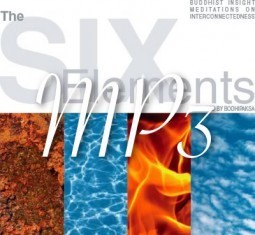 The Six Element Practice MP3This is a recording of meditation Hangout on Google+ where Bodhipaksa leads a session of the Six Element Practice, which is a traditional insight meditation practice taught by the Buddha.
The Six Element Practice MP3This is a recording of meditation Hangout on Google+ where Bodhipaksa leads a session of the Six Element Practice, which is a traditional insight meditation practice taught by the Buddha.
The Six Element Practice is a reflection on impermanence, interconnectedness, and non-self, where we notice that the elements of earth (anything solid that constitutes “us”), water (any liquid in the body), fire (the energy in the body), air (any gases within the body), and space (the body’s form) — that is, what constitutes our physical body — are not in any way separate from the world, but are simply borrowed from what we consider to be “not us.”
Even the separateness of the experiencer and that which is experienced is dropped, so that we can come to a state of pure non-dual awareness.
For more information visit our online guide to the six element practice.
Related posts:
The essential is invisible to the eyes
Listening as a meditation practice
Guided meditation: mindfulness of breathing
Related posts brought to you by Yet Another Related Posts Plugin.

August 28, 2013
The Mayu Bench: A review

Some months ago I was sent a Mayu Bench to try out and review, but somehow the review slipped off of my schedule.
Of the two benches pictured, mine is the tall one on the left. It’s a solid and stable meditation seat, and may be particularly suitable for people who find sitting on cushions or kneeling benches difficult. It allows you to sit much as you would on a chair, but with the advantage that the seat slopes forward, allowing you to have the spine upright without any effort. (Western chair design leaves much to be desired; the typical flat seat causes the pelvis to tilt backward, making it hard, if not impossible, to sit upright without making effort.)
The height is adjustable, and so is the tilt, within certain limitations. Both the height and the tilt are dictated by the placement of pegs, which fit into holes drilled into the uprights. Unless you drill your own holes you’re limited to the positions determined by the presets, but most people should be able to find a height and tilt that works for them.
The Mayu Bench is rather large. You almost certainly wouldn’t take the version I have on retreat with you, or even to your local meditation group unless you were driving and didn’t mind doing some carrying and some assembly and disassembly. But portability isn’t important for everyone, and if you want a meditation seat that remains firmly at home, then this is a good option. It’s fairly heavy as meditation benches go, but surprisingly easy to move around due to handles cut into the uprights.
You’ll probably need a cushion of some sort for the Mayu Bench. Sitting on bare wood can rapidly become uncomfortable (actually the material seems to be some kind of particle board, but the effect on the bottom is the same.) Additionally, the product name is carved into the seat, which doesn’t help with comfort — although the seat can be placed either side up, so if you get tired of having the words “Mayu Bench” embossed on your behind, then you can simply flip the seat over. I found that the cushion from my Kindseat, which is slightly tacky underneath and so doesn’t slip, was perfect.
You can choose various options for the Mayu Bench, with taller or shorter legs (you can see both options above) and a choice of two widths of seat.
I prefer my Kindseat for daily sitting, and would be unlikely to use the Mayu Bench regularly, but that’s just me. I’m planning to donate my review copy to my local Buddhist centre, where I suspect it will get a lot of use, since there’s a large contingent of visitors who are past or close to retirement age, and finding it harder to sit on the floor. The Mayu Bench will be perfect for many of them.
The Mayu Bench is available online from the Mayu Sanctuary Store, which operates out of Denver, Colorado.
Related posts:
The Kindseat: “The ultimate in meditation hardware”
The Kindseat has arrived!
Another glowing review of “Still the Mind”
Related posts brought to you by Yet Another Related Posts Plugin.

August 27, 2013
“There Is No God and He Is Always with You,” by Brad Warner
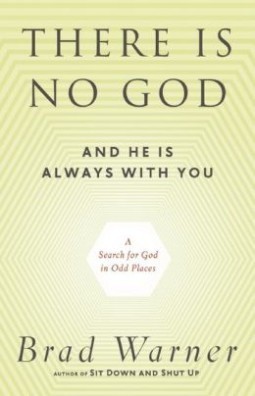 Brad Warner is an unconventional American Zen teacher, who seems sincerely to believe that he has found God, that God should be — or even is — an intrinsic part of Buddhist practice and realization, that others would benefit if they found God too, and who thinks that that believing in God might actually help us solve the world’s problems. He outlines all this in his latest book, There Is No God And He Is Always With You, in which he offers “straight talk about why this ‘godless religion’ [Zen Buddhism] has a lot to say about God.”
Brad Warner is an unconventional American Zen teacher, who seems sincerely to believe that he has found God, that God should be — or even is — an intrinsic part of Buddhist practice and realization, that others would benefit if they found God too, and who thinks that that believing in God might actually help us solve the world’s problems. He outlines all this in his latest book, There Is No God And He Is Always With You, in which he offers “straight talk about why this ‘godless religion’ [Zen Buddhism] has a lot to say about God.”
Some of the above will be as confounding for you as it was for me. After all, Buddhism is a non-theistic religion. The Buddha was not God, his spiritual realization had nothing to do with finding God, and the teachings that Buddhists follow have nothing to do with God. Buddhism in fact is attractive to many of us because it’s a spiritual tradition that is non-theistic, but Warner stands this on its head:
…in my opinion it’s entirely wrong to say that Buddhism is a religion without a God. In fact, it’s quite the opposite. To me Buddhism is a way to approach and understand God without dealing with religion.
The God that Warner believes in is not the anthropomorphic deity who, in popular imagination, sits in the sky making judgements about us and choosing, on Saturday afternoons, which college football team he will favor. Warner’s God is the entire universe, is us, is essentially indefinable, and is the supreme truth and ground of all being. For example:
Title: There Is No God And He Is Always With You
Author: Brad Warner
Publisher: New World Library
ISBN: 978-1-60868-183-9
Available from: New World Library, Amazon.co.uk, and Amazon.com.
“I believed that the nonmaterial aspects of our existence were real elements of the natural universe, and that we might call those aspects of the universe God.” (page 138)
“I’m not talking about God as the first cause of everything. I’m saying that our direct experience of life is God. Life is God experiencing God.” (page 81)
“God transcends any attributes we could imagine. Attributes, qualities, and characteristics all distinguish something from other things. But one of God’s attributes is that he is everything.” (page 122)
“…the Chinese word inmo … refers to the ineffable substratum of reality, the ground of all being and nonbeing. To me, this is just another way of saying God.” (page XIV)
“The supreme truth is, to me, another name for God.” (XIV)
Warner feels qualified to teach God as a part of Buddhism because he has, he believes, had an experience of God. One time when Warner was crossing a bridge in Tokyo (although he stresses that his experience was outside space and time) he experienced himself as being “spread throughout the universe and throughout all of time.” It sounds like a powerful altered state of perception, although it might seem odd that a Buddhist — someone practicing in a nontheistic religion, would interpret such an experience in theistic terms, which he does: “This was God. Is God. Will always be God,” and “I came away from the experience knowing certain things for absolute fact. I know now that God exists.”
Now, having an experience is one thing, but having had experiences we want to “explain” them in some way, often in terms of our previous beliefs and mindsets. In fact, Warner actually points out, in the context of how spiritual experiences such as this can be dangerous, “You need to work through a lot of your personal shit before you get into something like this, or you’ll only be able to experience it in terms of your own personal shit.”
So the question that arises for me, as a Buddhist who feels no need to interpret his own experiences in theistic terms, and with reluctance to be reductionist and psychological, is whether God is part of Warner’s “shit” that he has not worked through. Interestingly, it seems that he had been searching for God through his Zen practice. For example, “I got into [Zen] for a number of other reasons … but the biggest one was that I wanted to know if God really existed.” So, it does sound rather like Warner had a pre-existing notion of God — wanted to believe in the existence of God, in fact — went looking for God in Zen (an unlikely venue, I would have thought) and then ended up interpreting a powerful experience of nonduality in terms of God.
There are clues in the book suggesting why Warner felt the need to see his spiritual quest in terms of God. In discussing an early Christian theory that God is beyond concepts like existence and non-existence, Warner points out:
“…in order to agree with the logic, you have to first accept that there is something called God who is infinite and omniscient and transcendent and so on. But what if you don’t believe in that in the first place? What if you’re coming to this discussion from the standpoint that all matter is essentially dead and that consciousness is just an accident arising from the movement of electricity in the cerebral cells of animals who think far too highly of their own random brain farts?
So we have a classic false dichotomy here: There is either a God, or we live in a dead universe in which consciousness is nothing more than meaningless “brain farts.” God or meaninglessness. Some of us don’t feel the need to be trapped in that dichotomy and in fact see the Dharma as a middle way — as providing a sense of the life and the universe as containing meaning without recourse to the terminology of “God.” Certainly the Buddha seemed to have no need of such concepts, and I think he knew a thing or two about his own realization.
Similarly we find (on page 188) “When we forget God we treat one another and the world we live in as objects.” This is a classic argument: if we don’t believe in God we can’t be good. God or meaninglessness. And yet many of us — Buddhists, atheists — find that we are perfectly capable of not treating others as objects. Lovingkindness and compassion are virtues that, in Buddhism, don’t rely on God. Morality in Buddhism does not rely on God. In fact morality, in Buddhism, arises from the very structure of the mind, in that our suffering or lack of suffering depend on our volitions, and the thoughts, words, and acts that spring from them. Thus, morality is intrinsic to the mind, and therefore to the universe.
Warner apparently cannot disengage life having meaning, a sense of the universe being alive, and morality from the concept of God. It’s not, therefore, surprising that he went searching for God, nor that he found Him.
On the whole I find Warner’s writing to be very interesting and endearingly honest. For example he’ll tell you something about quantum physics and then say he doesn’t understand it and so isn’t a good person to explain it. But often his talk strikes me as less than “straight,” and he repeatedly uses phrases suggesting that God is an established part of Buddhism. It’s fine when he says something like, “To me Buddhism is a way to approach and understand God without dealing with religion.” But then he’ll say something like “I think it expresses the Zen Buddhist approach to the matter of God very succinctly” (emphasis added). That Zen Buddhism has an approach to the matter of God is a surprise to me.
Similarly:
“There is no God and he is always with you” may sound like a simple non sequitur or a typical pointless Zen riddle. But it expresses the Zen point of view about God very succinctly. Even though what you think of as God can’t possibly exist, there is a real spiritual dimension to this world. There is something that can be called God. [Emphasis added.]
So again we have “the Zen point of view about God,” which seems to be suggesting that God is a part of Zen Buddhism. This Zen point of view, we’re told, is that “there is a real spiritual dimension to this world” (which few would argue with), but also that “there is something that can be called God.” That there is something that can be called God is not, to the best of my knowledge. a part of traditional Zen teaching, although Warner’s choice of words suggests that it is.
And again, he states that the book is an “attempt to make the Zen approach to the question of God comprehensible to a contemporary Western audience steeped in the Judeo-Christian-Islamic traditions.” Not “one Zen Buddhist’s approach to the question of God,” nor “my approach to the question of God,” but “the Zen approach to God.”
If this is a technique for trying to give the impression that Zen (or Buddhism generally) has a position that is favorable to God, then it’s one that I’m disturbed by. It strikes me as talk that is the opposite of straight.
A similar pattern is found in Warner’s discussion of Dogen’s Shobogenzo. At first we have clarity: “Dogen’s writing never mentions God specifically.” Then Warner states his contradictory opinion, making it clear that it is an opinion, “In spite of this, I believe that Dogen’s Buddhism directly addresses questions about the nature of God.” That’s Warner’s belief. That’s fine.
But then the slippery slope begins: “Whenever I read this chapter I tend to substitute the word God for inmo. I don’t know what else Dogen could possibly be talking about other than God.” I don’t know any Japanese, but “inmo” (in other places I’ve seen it as “immo”) seems to be the Chinese or Japanese translation of the Sanskrit “t?that?,” which is usually rendered as “suchness” — an odd-sounding word meaning something like “the way things are” or “reality.” In a Buddhist context it never means anything like “God.”
Then the momentum of our slippery slope grows: “it’s useful to look at what Dogen wrote about his concept of God” (emphasis added). Now we’re being told that Dogen has a concept of God, although he wrote about no such thing; he wrote about t?that?, which Warner imagines must be God because he doesn’t know what else Dogen could possibly be talking about. I guess if you have a hammer and are desperate to use it, then everything starts to look like a nail.
Also:
This is where [Dogen] starts to talk about God. He says that another name for “it” [i.e. "inmo/immo, or tathatha/suchness] is the “supreme truth of bodhi.” The word bodhi means “enlightenment” or “awakening.” Dogen says, “The situation of this supreme truth of bodhi is such that even the whole universe in ten directions is just a small part of the supreme truth of bodhi: it may be that the truth of bodhi abounds beyond the universe.”
“This is where he starts to talk about God.” I see no talk about God in that passage, or in anything else Warner quotes from Dogen. I see some deep and intriguing talk about t?that? and about “the supreme truth of bodhi.” But there’s nothing about God.
And later, “the Buddhist view of things is that God is neither spirit nor matter.” I was unaware that Buddhism had such a view.
These statements seem to me to fly in the face of Warner’s claims to be delivering “straight talk.”
I’m not arguing, of course, that Buddhists, especially in modern times, have talked about God one way or another. Warner gives examples, such as Nishijima Roshi (“God is the universe, the universe is God”), who has taught a lot of westerners and thus has had to deal with questions about God. The expression “There is no God and he is always with you” comes ultimately from Sasaki Roshi, who has also spent a long time (in the US) teaching westerners. But these are responses to people trying to reconcile their existing belief in God with their explorations of the non-theism of Buddhism.
So I’m just saying that God is not an established part of Buddhist teaching — in fact is alien to Buddhist teaching — but that Warner’s choice of words suggest he’s trying to give the impression that Dogen and other traditional Buddhist teachers have a view of God. But even in discussing contemporary teachers, Warner again tends to insert God where he hasn’t been mentioned:
“In Kobun Chino’s words, ‘You are held by the hand of the absolute’: that is, God holds his own hand.” But Kobun’s statement had nothing at all to do with God. He was again talking about t?htat?, or something similar.
Warner admits that his use of the term “God” is problematic. He says more than once that it’s “dangerous” (page 175) and that it’s also divisive:
I think it would be better for us as Westerners to start using that dangerous and divisive word God when we talk about what happened to Buddha all those centuries ago and what continues to happen to contemporary people who follow his way.
He also accepts that the term God is eternalistic (that is, it contradicts impermanence) and dualistic, but seems to see that — somehow — as a plus:
The fact that eternalism/dualism is enshrined by the word God is one of the many facets of it that makes the word so useful, I think. The nature of my practice has always been that whenever I believe I’ve finally figured out what things mean, there ’s always another aspect that I’ve missed. Just when I believed Buddhism was all about getting rid of eternalism and dualism, there it was in the very fabric of the universe itself, something eternal and dualistic.”
Why does Warner think that this problematic, dangerous, divisive, eternalistic, and dualistic language is useful? Partly because there’s too much talk about enlightenment being something easy to attain, in contrast to “seeing God,” which is not easy to attain:
This is one reason that I’m trying to introduce the word God into the Western Buddhist dialogue. The word enlightenment, or substitutes such as transformation, seems to suggest a psychological state that one might induce with some kind of seminar or fancy technique or drugs. If we start talking in terms of “seeing God,” it might become clearer to everyone that we’re talking about something much grander and much more difficult.
I think this is an insightful identification of a problem, combined with one of the worst conceivable suggestions for a solution. In traditional Christian terms, “seeing God” was indeed a task for spiritual heroes, who would have to go to extreme lengths (sometimes literally — they were often hermits) and commit to challenging and sometimes dangerous practices (some saints starved themselves almost to death in order to see God). And Buddhist teachers touting workshops that promise help you to “realize a deep experience of True Self” (In only two days! For $5000!) are clearly presenting a misleading account of what enlightenment is and how it is attained. But perhaps rather than introducing an alien and problematic concept to Buddhism we should be trying to promote a better understanding of enlightenment and of the difficulty of attaining it. My own equivalent of “seeing God” is my quest to “know the mind of the Buddha,” which is something I see as a lifelong quest, and not something that can be done in a two-day event at the Embassy Suites, LAX South (10:00 AM Monday to 6:00 PM Tuesday).
I’m actually sympathetic to what Warner is trying to achieve. As well as wanting to get away from the idea that enlightenment is easy to attain, he wants people to escape the notion that the universe is “dead” and meaningless. He wants people to see the world as alive, and to have personal connection with reality. He wants people to see themselves as being vaster than they can possibly imagine. These are all excellent aims. But you don’t need God for any of this. Buddhist teachings and practice already lead to these perspectives, and in fact it was presumably Warner’s Buddhist practice that provoked realization of connectedness, timelessness, and a profound sense of meaning. But he’s unfortunately interpreted that experience in terms of (to use his expression) the “shit” that he hasn’t worked through about God.
For an example of the universe as a loving, living presence, here’s one of my favorite quotes from Jan Chozen Bays’ book, How to Train a Wild Elephant:
Seeing with loving eyes is not a one-way experience, nor is it just a visual experience. When we touch something with loving eyes, we bring a certain warmth from our side, but we may also be surprised to feel warmth radiating back to us. We begin to wonder, is everything in the world made of love? And have I been blocking that out?
A sense of the world being imbued with a loving presence is not uncommon when we practice the brahmaviharas which, unfortunately, are an aspect of Buddhist practice that has been dropped by the Zen tradition.
Or in the Indo-Tibetan tradition we have the teaching of the universe as the manifestation of a primordial, living reality. Here’s the Dalai Lama:
I understand the Primordial Buddha, also known as Buddha Samantabhadra, to be the ultimate reality, the realm of the Dharmakaya — the space of emptiness — where all phenomena, pure and impure, are dissolved.
But His Holiness also clarifies: “It would be a grave error to conceive of [the Primordial Buddha] as an independent and autonomous existence from beginningless time.” In other words don’t think about this primordial reality as a separate God. Actually, that’s pretty similar to what Warner says, but without the problematic language. Which is my point; Buddhism already has it covered.
The Indo-Tibetan approach is subtle because it allows for us having a personal relationship with reality — a sense that the universe is imbued with compassion and wisdom — but at the same time it has a non-dualistic view. As the Dalai Lama puts it, “we do not visualize this source as a unique entity, but as the ultimate clear light of each being. We can also, on the basis of its pure essence, understand this clear light to be the Primordial Buddha.” We can even feel a strong sense of personal connection with the Dharmakaya (primordial reality) as it manifests through the Sambhogakaya — the forms we perceive as Buddhas and Bodhisattvas, with whom we can have a personal connection, all while not seeing them as separate from the nature of our own mind.
This may need some unpacking, or even some struggle, for many peple to understand it, but it seems clear to me that Buddhism already has, in non-theistic terms, what Warner sees as God, but without using the term God.
I think real problems emerge when you try to force God language into Buddhism. Warner at one point says that God is a good term to use for what Zen is about because “shoving the word God into a tidy intellectual container would be like trying to shove a live octopus into a Kleenex box.” But shoving the word “God” into Buddhism is equally problematic.
One practical problem is that many people are in fact looking for a religious tradition that doesn’t hinge on belief in a God, and will be put off by God-talk.
Another is that there’s a serious danger that once you force God into Buddhism, you no longer have Buddhism, but some kind of New Age quasi-Hinduism, or even something barely distinguishable from some of the nicer forms of Christianity.
And the very term “God,” as Warner points out, is divisive, dualistic, and dangerous. He thinks this is a good thing for Buddhism; I don’t. And once you start thinking of your spiritual quest in terms of wanting to know “what God wants from you” (the title of one of the chapters) you’ve opened the way to some dangerous delusions.
Despite my many reservations, there were things I liked about this book. I could write a lot about themes he raised, but I’ve already gone on longer than I’d intended. Short version: Brad Warner is a funny and interesting teacher. He’s endearingly self-deprecating. There are some great discussions about the nature of faith, about the need to be ready for awakening, about the nature of time, and about the problems of translation. Having read his book I definitely want to hang out with Dogen’s Shobogenzo.
But on the whole, the last thing I think Western Buddhism needs is the intrusion of God.
Related posts:
Tears to Remember – Judith Warner
Wordless Wednesday: God on a bicycle
Einstein on Religion
Related posts brought to you by Yet Another Related Posts Plugin.

August 26, 2013
“To be creative means to consider the whole process of life as a process of birth, and not to take any stage of life as a final stage.” Eric Fromm
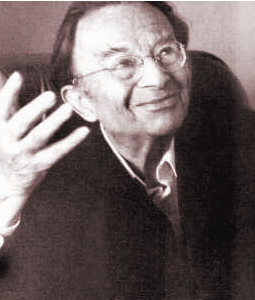 For social psychologist and psychoanalyst Erich Fromm, creativity wasn’t necessarily about bringing something — a poem, a symphony, a sculpture — into being. For him, creativity was an attitude. Creativity was the ability first to be aware, and then to respond. In this sense, creativity may produce works of art that can be viewed in a gallery, but it is also a way of living. Creativity may produce not only art but a life lived with awareness, a life imbued with meaning, a life lived well. Creativity is about allowing life to come into being — fully.
For social psychologist and psychoanalyst Erich Fromm, creativity wasn’t necessarily about bringing something — a poem, a symphony, a sculpture — into being. For him, creativity was an attitude. Creativity was the ability first to be aware, and then to respond. In this sense, creativity may produce works of art that can be viewed in a gallery, but it is also a way of living. Creativity may produce not only art but a life lived with awareness, a life imbued with meaning, a life lived well. Creativity is about allowing life to come into being — fully.
When I sat down to write this post just a few minutes ago, I looked at this quote, which I had chosen last week, and felt an inner heaviness. “I have nothing to say” was my thought. My impulse was to head to the internet to find something “easier” to write about — something that would unleash an instant torrent of thoughts. Fromm’s words had looked appealing last week, but today they evoked nothing but fear.
I was experiencing resistance. I was experiencing doubt. But to be creative is “not to take any stage of life as a final stage.” Resistance and doubt are not final stages. They are not substantive. They are not fixed or solid. They’re like fog born over a lake in the hours before dawn, destined to dissipate as the sun rises. If we react to doubt, though, we take it to be something solid, something to be feared and to escape from. But it’s only a delusion that it’s solid.
So this is the awareness I bring to meet my resistance: Here you are. I find you unpleasant to be with, but although I fear you I will turn toward you. I will bring the sun of my awareness to meet you, and watch you dissipate.
And another birth happens. As doubt dissolves away, words appear, and confidence is born.
When we take the birth of something we find uncomfortable, like doubt and resistance, as being “final,” we make a judgement about ourselves (“I can’t do this; I have nothing to say; I’d better not do anything or people will think it sucks”). We run from the unpleasant, since we have deemed ourselves incapable of enduring it. We seek an easy escape from our pain. We cease to live creatively and responsively. And in doing so we give life to our doubts, making them appear more solid and substantive than they actually are. The judgements we make become our self-view (“I’m not the creative type”). We fix ourselves. We take ourselves as something final. We fail to act responsively. We fail to truly live.
To be creative is to live. It’s to live fully. The Buddha said that only those who are aware are truly alive. He said that those who lack awareness are like the dead. In the zombie-like state in which most of us spend the majority of our lives, we are not mindful, and so instead of responding we merely react. Rather than living as fully aware and responsive beings, a bundle of habits stumbles through a simulacrum of life.
Mindfulness allows us not so much to live life without fear, but to see our fears (and that which we fear) as just one more part of the process of life; as just one more impermanent arising; as the fog before the dawn.
 If you benefit from this work, please consider supporting Wildmind. Click here to make a one-time or recurring donation.Mindfulness opens the way for us to view everything we experience in this way. Our very sense of self may dissolve away. It’s not that we entirely lose our sense of self, but that we stop seeing our self as composed of anything substantive. Our “self” is not a final stage. It’s something in process. It’s composed of change. We see, in a way, that our “self” isn’t a “self.” It is nothing but moments of birth and death.
If you benefit from this work, please consider supporting Wildmind. Click here to make a one-time or recurring donation.Mindfulness opens the way for us to view everything we experience in this way. Our very sense of self may dissolve away. It’s not that we entirely lose our sense of self, but that we stop seeing our self as composed of anything substantive. Our “self” is not a final stage. It’s something in process. It’s composed of change. We see, in a way, that our “self” isn’t a “self.” It is nothing but moments of birth and death.
Mindfulness brings understanding, or wisdom. And with this wisdom we recognize which of the processes unfolding within us are life-denying, born of fear. Fear itself has this life-denying quality, as do grasping, hatred, resistance, and aversion. These qualities are manifestations of our inability to see all experiences as transitory and evanescent events. They represent our false belief that some stages are final. And we respond not by fleeing from these inhibiting and life-denying processes, but by turning toward them with mindfulness, seeing them as impermanent and insubstantial, and seeing through them.
When we respond in this way, creativity is already emerging. We are already living with awareness and living with wisdom. And increasingly, creativity is not something that we do. It’s something that happens of its own accord. It is life, living through us, unchecked, unfettered, and free.
Related posts:
Visiting Maia’s birth family
Creative daydreaming
Adoption process
Related posts brought to you by Yet Another Related Posts Plugin.

August 21, 2013
The Power of Self-Compassion: A Workshop in Toronto, Oct 19, 2013
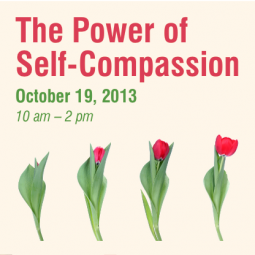 On this workshop we’ll explore the power that self-compassion has to free us from hurt and fear, and to free us up to be compassionate toward others.
On this workshop we’ll explore the power that self-compassion has to free us from hurt and fear, and to free us up to be compassionate toward others.
Studies have shown that self-compassion leads to greater emotional resilience and happiness. When we’re compassionate toward ourselves not only are we happier, but we’re also more able to help other people.
And yet many of us find it hard to have compassion for ourselves. We tend to be self-critical, and have difficult distinguishing self-compassion from self-pity and self-indulgence. On this day of meditation and reflection, Bodhipaksa will guide us through practical exercises in learning to regard ourselves — and our pain — with compassion. (Download the PDF poster here.)
Leader
The workshop will be led by Bodhipaksa, a Scottish-born author and Buddhist teacher who lives in New Hampshire. Bodhipaksa is the founder of Wildmind (www.wildmind.org) a leading internet meditation resource.
Venue
Mindful BodyWorks
1278 St. Clair Ave W
2nd Floor, Unit 14
Toronto, ON M6E1B9
It’s open to all, even complete beginners to meditation.
Cost
$40 early bird rate (up to Oct 12)
$50 after Oct 12
P.S. For anyone interested, there will be an optional gathering after the workshop to discuss setting up regular Triratna Buddhist Community events in Toronto. Bodhipaksa (visiting from New Hampshire) and Harshaprabha (visiting from the UK) will be hosting the gathering.
Related posts:
12-week videoconference meditation workshop, with Bodhipaksa (starts Jan 24)
An awareness imbued with compassion (Day 49)
Whale Watching, Oct 2005
Related posts brought to you by Yet Another Related Posts Plugin.

August 20, 2013
On doing a variety of practices
 Sometimes I have meditation students who have problems learning a particular meditation technique because it appears to be fundamentally different — even contradictory — to other approaches to meditating that they’ve learned.
Sometimes I have meditation students who have problems learning a particular meditation technique because it appears to be fundamentally different — even contradictory — to other approaches to meditating that they’ve learned.
In fact, I’ve had experiences myself that are similar in some ways to this. I once went on a retreat run by teachers who have a different approach to me in order to learn more about their techniques and perspectives, and I found that some of the things they said plunged me into doubt and confusion — and aversion.
I found myself in my meditation continually arguing about things that they had said and about how I thought they made no sense. There was one statement in particular that I thought was contrary to the Buddha’s teaching. A teacher said, “In vipassana we don’t try to get rid of the hindrances” — the hindrances being a traditional classification of distracted states of aversion, craving, and confusion. This threw me into turmoil for two days! I kept thinking of all the suttas (discourses of the Buddha) where he talks about the necessity of overcoming the hindrances. In the face of this (and other teachings), the advice not to try to rid the mind of the hindrances seemed positively un-Buddhist.
This turmoil went on until I had a chance to talk to the teacher who had made this statement. And when I told her I was confused, she replied, “Oh, I didn’t really mean that — it’s just something I say to the beginners.” The intention was to help beginners not to see it as “bad” that they were experiencing the hindrances: to help them avoid the trap of developing aversion to the hindrances and trying to push them away or suppress them.
So sometimes these confusions are apparent, and if you dig deeper you find that two seemingly different approaches aren’t as different as they might seem.
Other times meditation practices may actually be based on quite different premises. There are practices where you’re very definitely trying to bring particular states into being. For example you may be cultivating lovingkindness in the metta bhavana. There are other practices in which you may be just allowing your experience to arise, without interfering with anything. Those are very different approaches, but it’s not that one or the other is wrong: they’re just different tools.
When we cling to the idea that there’s one “right” way to meditate, and that new approaches are “wrong,” this isn’t very helpful. If you hear anyone saying that there’s only one way to meditate, I suspect they’re misinformed, caught up in clinging, or selling something.
The Buddha taught many different meditations: anapanasati leading to jhana, meditations leading to the formless spheres, metta bhavana and the other brahmaviharas, six element reflection (and four- and five-element reflections), simply paying attention to the impermanence of our experience in meditation, etc. He taught visualization practices. He offered us a rich tool box of approaches to working with our experience.
These approaches are all valid and complementary, and the practice of one can enhance the experience of the others.
Some people might argue that in doing a number of meditation practices you’re digging many shallow wells rather than one deep well. But since meditation practices are different tools meant to accomplish specific tasks, it’s more like using a variety of tools to dig one deep well. Sometimes you need a shovel, sometimes you need a pickax, sometimes you might need a pry-bar, sometimes you need to take a rest (that’s a tool, too). You’re taking many different approaches — but to one end. There’s really only one task.
There are just two things I would add to this. One is that we need to be clear what the task is; what is the well you’re digging? And second, we need to use the right tool, or combination of tools.
That task, the well we’re digging through Buddhist meditation practice, is what I call “unselfing.” Any practice you’re doing is reducing the sense of having a fixed and separate self that leads us into suffering. Some of the approaches are “samatha” (i.e. they’re aimed at developing and strengthening positive qualities such as mindfulness and lovingkindness) and some are “vipassana” (i.e. they’re aimed at changing, on a fundamental level, how we see ourselves and our relation to the world) but all meditation practices involve unselfing.
Simply paying attention to your breathing — letting go of distractions as they arise and returning over and over to the breathing — unselfs us by quieting the constant thoughts we have that involve comparison, aversion, and clinging (activities that reinforce out sense of self).
Cultivating lovingkindness unselfs us by expanding our sense of concern beyond ourselves and into the lives of others, so that we see others’ joy and pain as being part of our concern. In a way we expand our sense of self, and thus dilute it.
Six element meditation unselfs us by helping us to see that there is no separate self. We’re not physically separate from the world, so there’s physically no “me.” Our consciousness is also not separate from the world either. There’s nothing to grasp onto; there’s not even a “me” to do any grasping.
“Just sitting” practices that lead to experiences of non-duality lead to unselfing by reducing our sense of separation.
Any meditation in which we’re observing the arising and passing of our experience is likewise unselfing. We train ourselves to see more and more clearly that there is no part of “us” that is stable. How, therefore, can there be a stable, static, separate self?
So we need to have a coherent sense of what it is that we’re actually doing. Deep down, there’s no conflict between these practices, because they’re all unselfing. Because the practices I do are all doing the same thing, but in different ways, they’re all complementing each other.
Then there’s a question of which tools to use, and in which combinations. For me, some form of mindfulness of breathing and some form of developing lovingkindness or compassion are crucial. These two practices are complementary to each other, and also essential. We need mindfulness. We need lovingkindness. And this may be all we do for a few years.
But eventually some form of vipassana approach is necessary as well, whether it’s six element meditation or simply observing the impermanence, non-self, or unsatisfactoriness of our experience (or doing all three).
I’m not too good at dealing with complexity, so two or three regular practices is about all I can manage, although when I’m on retreat I’m happy to explore other approaches. But I’d guess that for most experienced meditators something like three to four practices is enough to be getting on with. Precisely which ones a particular person does might depend on many factors. If someone’s a strict Zen, practitioner, for example, they’ll probably do zazen and nothing else. But for people who are less wedded to one tradition — they may primarily rely on one tradition but draw on other teachings, or may practice outside any defined tradition — it depends very much on what they might need and what stage they’re at in their practice.
You may find it’s useful to have a schedule, and to plan out what practice you’re going to do on any given day: body scan on Monday, Mindfulness of Breathing on Tuesday, Metta Bhavana on Wednesday, etc. That might give your mind permission to be content with what you’re doing on any particular day. Or if you don’t suffer from the torment of not knowing which practice to do, you can just play it by ear. At times you might have to be disciplined so that you don’t avoid a practice you don’t think your “good at.” Other times you need to give yourself the flexibility to work on what needs to be worked on.
So to cut a long story short: don’t assume there’s only one right way to meditation. Be clear about what the well is that you’re digging, and see how the various tools available to you help you to dig that well. And lastly, choose the most appropriate meditative tools, and use them as wisely as you can.
Related posts:
Lovingkindness as a path to awakening (Day 25)
The dark side of meditation
Upekkha as an insight practice (Day 85)
Related posts brought to you by Yet Another Related Posts Plugin.

August 18, 2013
Guided meditation: mindfulness of breathing
 The video below is another recording from one of the Google Plus Hangout meditations that I lead from time to time.
The video below is another recording from one of the Google Plus Hangout meditations that I lead from time to time.
This one is a form of the mindfulness of breathing. It follows the traditional form that’s taught on this site, but with more of an emphasis on setting up conditions for the jhana factors to arise.
I incorporate a few elements which have become distinctive in my teaching: the principle of paying attention to a broad band of experiences connected with the breathing, so that we use up as much mental bandwidth as possible in order to reduce distracted thinking. This week I add a little twist, which is paying attention to the three-dimensionality of the breathing: something I find really calms the mind, probably because it moves activity from the left to the right hemisphere of the brain.
Enjoy! And remember that we have a thriving community on Google+, where we share what’s going on in our practice and give each other support and encouragement. Please join us!
Related posts:
Guided Meditation: Mindfulness of Breathing
Mindfulness: now in exciting 3D!
Breathing with love
Related posts brought to you by Yet Another Related Posts Plugin.

August 16, 2013
Could an awareness of the heartbeat be a vital component of empathy?
 An awareness of the heart (the physical organ, not the metaphorical seat of emotion) and its role in empathy. Noticing the heart concerns a process called interoceptive awareness (IA), which is just a fancy term for how we monitor the body’s internal state. There’s evidence that interoceptive awareness is important for social cognition, including empathy.
An awareness of the heart (the physical organ, not the metaphorical seat of emotion) and its role in empathy. Noticing the heart concerns a process called interoceptive awareness (IA), which is just a fancy term for how we monitor the body’s internal state. There’s evidence that interoceptive awareness is important for social cognition, including empathy.
Neuroscientists think we detect our own heart-beats via two routes. One is “somatosensory” — that is, we feel the movement of the heart’s beat through our sense of touch. The other route is via the vagus nerve, which runs from the brain down to the heart and beyond, and which carries electrical impulses in both directions.
The British Psychological Society reports that researchers Blas Couto and Agustin Ibanez and their colleagues, at the University of Cambridge and INECO (Instituto de Neurología Cognitiva, in Argentina), studied a man who is awaiting a heart transplant and who has a kind of “artificial heart” to support the function of his failing left ventricle. This assistive device beats out of sync with he man’s natural heart, and when asked to tap in time with his heartbeat the man would tap in time with the device, not with his own heartbeat.
An EEG showed that brain activity associated with interoceptive awareness was reduced in the man’s brain compared with control subjects. He seemed to have lost touch with his own heart, presumably because the sensory input from the artificial heart was much stronger in comparison.
The interesting thing, though, is that this subject’s empathy was impaired in comparison with control subjects. He also had greater difficulty understanding other people’s mental states) and with decision-making. These impairments are consistent with past research showing how interoceptive awareness is important for social and emotional cognition.
Now of course a sample of one patient is not necessarily representative, but it would be an interesting practice to pay more attention to your heartbeat — both during meditation and in other activities — and to see whether this brings about any changes in your level of empathy. There’s lots of scope for subjectivity here — how exactly do we measure our own empathy — but subjective evaluations are an inherent part of meditation experience.
I’d suggest just noticing the beating of the heart, and seeing what, if anything, happens.
Related posts:
Vegetarians “do empathy” differently
Empathy and collective intelligence
An awareness imbued with compassion (Day 49)
Related posts brought to you by Yet Another Related Posts Plugin.

August 15, 2013
Mindfulness: now in exciting 3D!
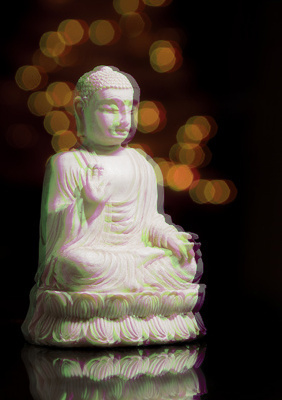 I used to practice and teach mindfulness of breathing largely as if it were “mindfulness of the breath.” The difference is that when we think about “the breath” we think about the stuff that flows in and out of our airways, and the physical contact the body makes with it, while if we think of “the breathing” we are free to consider “the breath” but also any other physical sensations that arise as we breathe in and out. These sensations include:
I used to practice and teach mindfulness of breathing largely as if it were “mindfulness of the breath.” The difference is that when we think about “the breath” we think about the stuff that flows in and out of our airways, and the physical contact the body makes with it, while if we think of “the breathing” we are free to consider “the breath” but also any other physical sensations that arise as we breathe in and out. These sensations include:
The contact the body makes with the breath in the nose, head, throat, and lungs
The movements of the abdominal muscles, not just on the front, but on the sides and back of the body, all the way back to the spine.
The changing pattern of contact that the skin on the abdomen, side, and lower back has with our clothing and waistband as we breathe in and out. This can include not just touch, but temperature.
The rise and fall of pressure within the abdomen.
The movements of the ribcage, all the way from the sternum, around the sides of the body, and on the back — all the way to the spine.
The changing pattern of contact that the skin on the front, side, and back of the ridcage has with our clothing (and perhaps with our arms) as we breathe in and out.
The rise and fall of the shoulders.
Movements felt inside the shoulder joints.
Movements in the arms, and (possibly) changing contact between the chest and the arms.
Changes in the length and flexion of the spine.
There may also be sensations that arise all the way down through the legs, perhaps all the way to the toes, and sensations all the way down through the arms to the tips of the fingers. These sensations aren’t necessarily imagined! Your heart beats faster when you inhale and slower when you exhale, and this affects the blood pressure throughout the body in a rhythmic way, with a decline in blood pressure during inhalation and an increase during exhalation. It seems, in some people, or perhaps in everyone under relaxed and attentive conditions, that these changes can be felt throughout the body.
So when I’m meditating I try to pay as much attention to as many of those sensations as possible. This creates a kind of “perceptual stretch” where my mind is so occupied with noticing the ever-changing sensations of the breathing that it doesn’t have any resources available for inner chatter. So the mind almost instantly becomes very quiet.
You could call this “Full Contact Mindfulness of Breathing.” It’s the way I do and teach the practice these days.
This morning one of my meditation students happened to mention that she liked this “three dimensional” approach to mindful breathing. Now I don’t know if she meant “three dimensional” in a metaphorical or a literal way, but
I like the phrase “three-dimensional” with regard to the breathing meditations. It reminds me that I find an awareness of the literal three-dimensionality of the breathing to be very helpful. The more sense I have that my body is moving in three dimensions, the more engaged I am. Even just being aware that as I inhale my chest is moving both forward (on the front) and backward (at the back of the ribcage), and that as I exhale it’s moving forward (on the back) and backward (on the front) seems to give my mind much more to stay engaged with. And that’s only engaging with two dimentions.
When I have a sense, say, of my ribcage expanding and contracting in three-dimensional space, like a balloon that’s inflating and deflating on every in-breath and out-breath, then my mind is even more engaged. The talking part of my brain basically just shuts down, and my mind is very happy to be paying attention to my breathing.
I suspect that this awareness of three dimensional space forces us to draw on the resources of the right brain, and shifts resources away from the left brain, which is more verbal: hence the reduction in inner chatter.
So I’d recommend that you explore not only the technique of Full Contact Mindfulness of Breathing” but of “Three Dimensional Mindfulness.” You might find that it gives you deeper, quieter, and more fulfilling meditations.
Related posts:
There’s nothing to hold onto; there’s nothing to do any holding on. (day 89)
Introducing “The Power of Mindfulness”
Mindfulness of hunger
Related posts brought to you by Yet Another Related Posts Plugin.

August 14, 2013
The dark side of meditation
 Here’s an interesting conversation between Brown University neuroscientist (and meditation teacher) Willoughby Britton and yoga and Buddhism teacher Michael Stone. Britton, as a good scientist, is interested in cataloguing the confusing, unpleasant, and sometimes harmful effects that meditators may experience, including cognitive and sensory aberrations, emotional difficulties or challenges, changes sense of self, and disturbing physiological manifestations.
Here’s an interesting conversation between Brown University neuroscientist (and meditation teacher) Willoughby Britton and yoga and Buddhism teacher Michael Stone. Britton, as a good scientist, is interested in cataloguing the confusing, unpleasant, and sometimes harmful effects that meditators may experience, including cognitive and sensory aberrations, emotional difficulties or challenges, changes sense of self, and disturbing physiological manifestations.
My experience is that adverse effects to meditation are rare. Some manifestations in fact may not be at all harmful and may be signs of progress in meditation (e.g. changes in the perceived relative size of different parts of the body) but might be mistaken for “going crazy.” Other manifestations — such as some people who have contacted me to discuss a complete loss of emotional affect — are clearly very destructive and need to be investigated.
Britton makes the point that some approaches to meditation have ripped mindfulness from its traditional context, where it’s embedded in a framework of practice that includes intellectual understanding, ethical observance, devotion, and practices such as the brahmaviharas, and present it as a stand-alone practice. This may work for many people, but it may also lead to problems.
Related posts:
Having a meditation toolkit
Two opportunities to learn meditation with Bodhipaksa
The demon in the dark
Related posts brought to you by Yet Another Related Posts Plugin.




